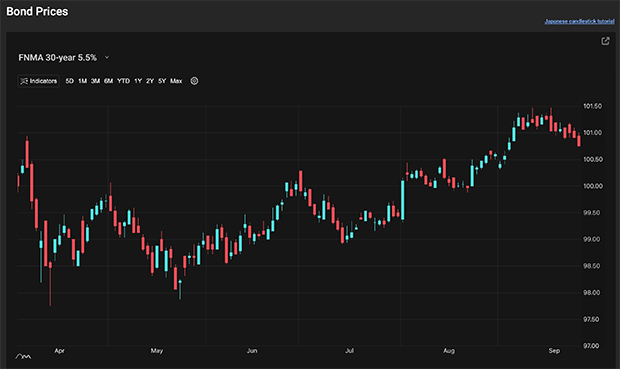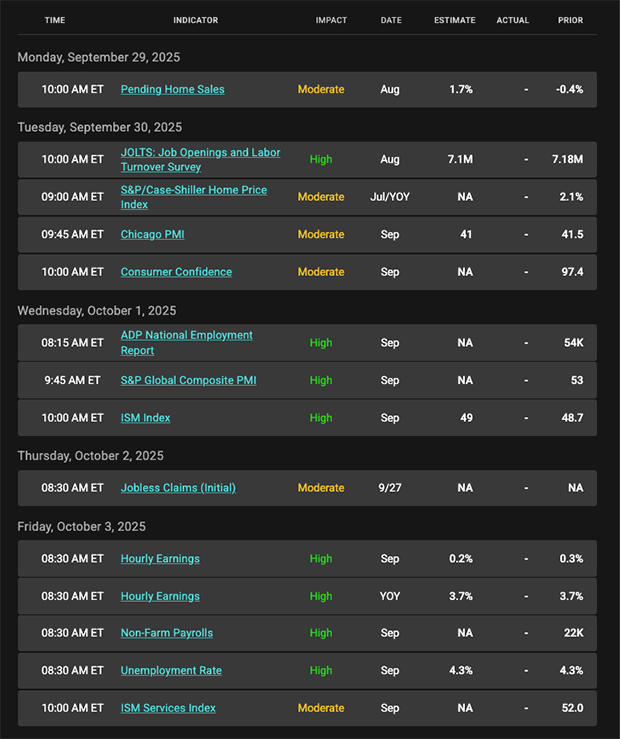Please note: While we live and breathe Non-QM, we know the bigger picture matters. This update looks at the broader mortgage market because what’s happening out there impacts everyone—borrowers, brokers, and lenders alike.

On the heels of the Fed’s recent rate cut, interest rates moved higher. Let’s explore why this happened and what to expect in the busy week ahead.
“Good times, bad times, you know I’ve had my share.”
– Good Times Bad Times, Led Zeppelin
The U.S. Economy Remains Resilient
The second-quarter GDP report showed the economy grew faster than expected, signaling growth is holding up despite higher interest rates. Strong GDP means businesses are producing more, consumers are still spending, and overall economic health remains solid.
What It Means for Rates & Clients:
- A stronger economy can keep upward pressure on interest rates.
- If growth stays hot, the Fed may feel less urgency to cut rates.
- Signs of cooling in areas like the labor market could still shift the outlook.
The Takeaway: The first half of 2025 was healthy, but the path forward depends on whether growth slows enough to keep inflation moving lower. That will also shape how quickly the Fed cuts rates going forward.
Consumers Are Durable
Durable Goods Orders: Big-ticket purchases like cars, appliances, and machinery, jumped 2.9% in August. Markets were expecting a decline.
This strength shows businesses and consumers are still confident enough to invest in large purchases. While that’s good news for the economy, it also signals ongoing demand that could keep inflation sticky; making the Fed cautious about cutting rates too soon.
Fed Inflation Target to Change?
Fed officials Michelle Bowman, Raphael Bostic, and Stephen Miran floated the idea of shifting from a strict 2% inflation target to a target range, like many other central banks use globally.
Before 2012, the Fed didn’t have an official inflation target, instead aiming for “low and stable prices.” Any change now would come gradually and only after inflation moves closer to today’s 2% goal.
30-Year Mortgage Rate
The 30-year fixed rate mortgage averaged 6.30% as of September 25, 2025, up from last week when it averaged 6.26%.
4.20%
The 10-year Treasury yield, closely tied to mortgage rates, has been range-bound between 4.20% and 4.50% for nearly a year. Recently, it dipped just under 4.20%, and that level may act as a ceiling to limit further increases.
Bottom line: Mortgage rates ticked higher after the Fed meeting, and this week’s strong economic data added to the upward pressure.
Looking Ahead
Next week is all about jobs; the other half of the Fed’s dual mandate. Key reports include:
- ADP (private payrolls)
- JOLTS (job openings)
- Jobs Report (Friday’s main event)
If job growth beats expectations, the Fed may limit its next rate cut to just 0.25% in October. A weaker report could open the door to deeper cuts.
Mortgage Market Guide Candlestick Chart
Mortgage bonds pulled back from recent highs, meaning rates edged higher from their 2025 lows.
Chart: Fannie Mae 30-Year 5.5% Coupon (Friday, September 26, 2025)

Economic Calendar for the Week of September 29 – October 3

The material contained in this newsletter has been prepared by an independent third-party provider. The content is provided for use by real estate, financial services and other professionals only and is not intended for consumer distribution. The material provided is for informational and educational purposes only and should not be construed as investment and/or mortgage advice. Although the material is deemed to be accurate and reliable, there is no guarantee it is without errors.



